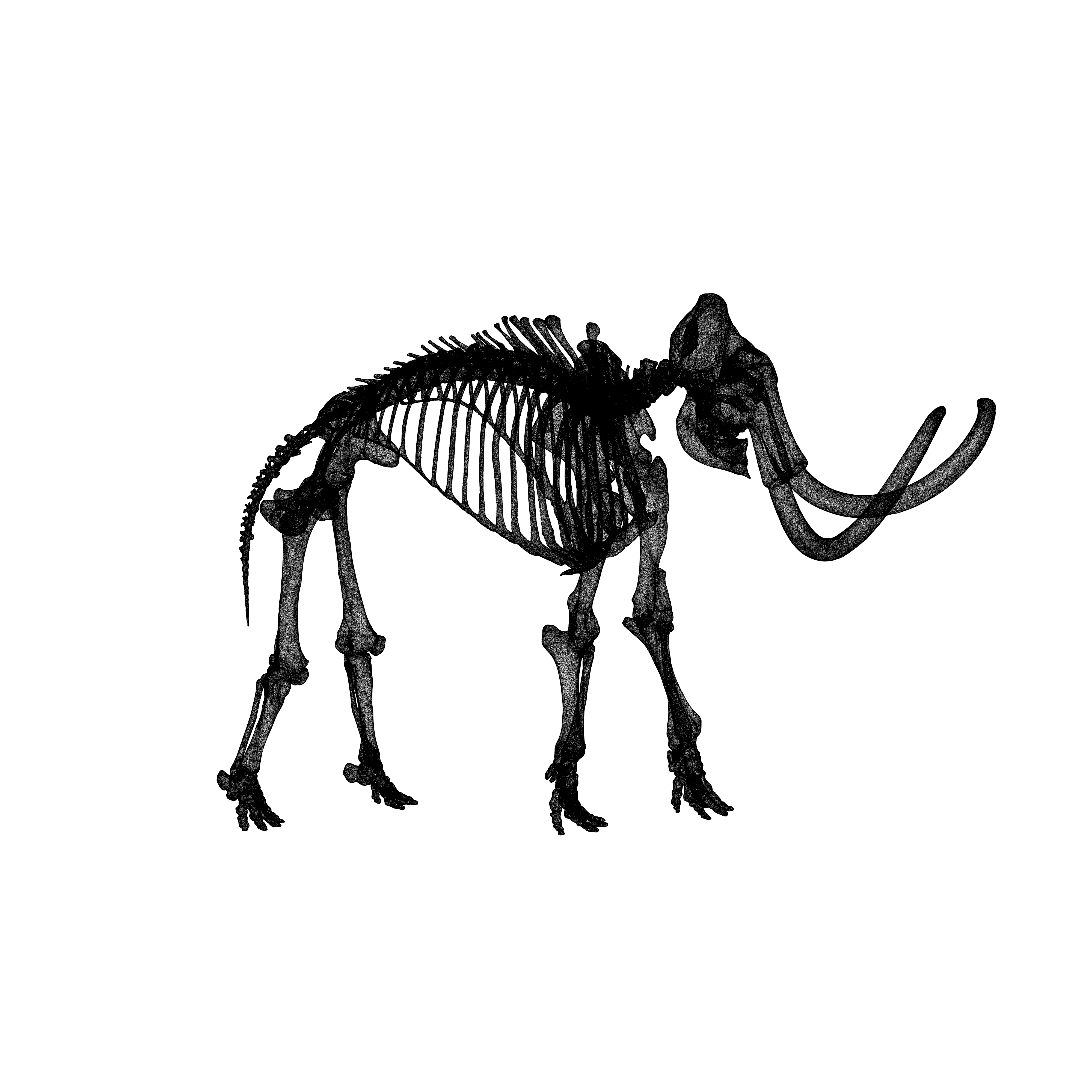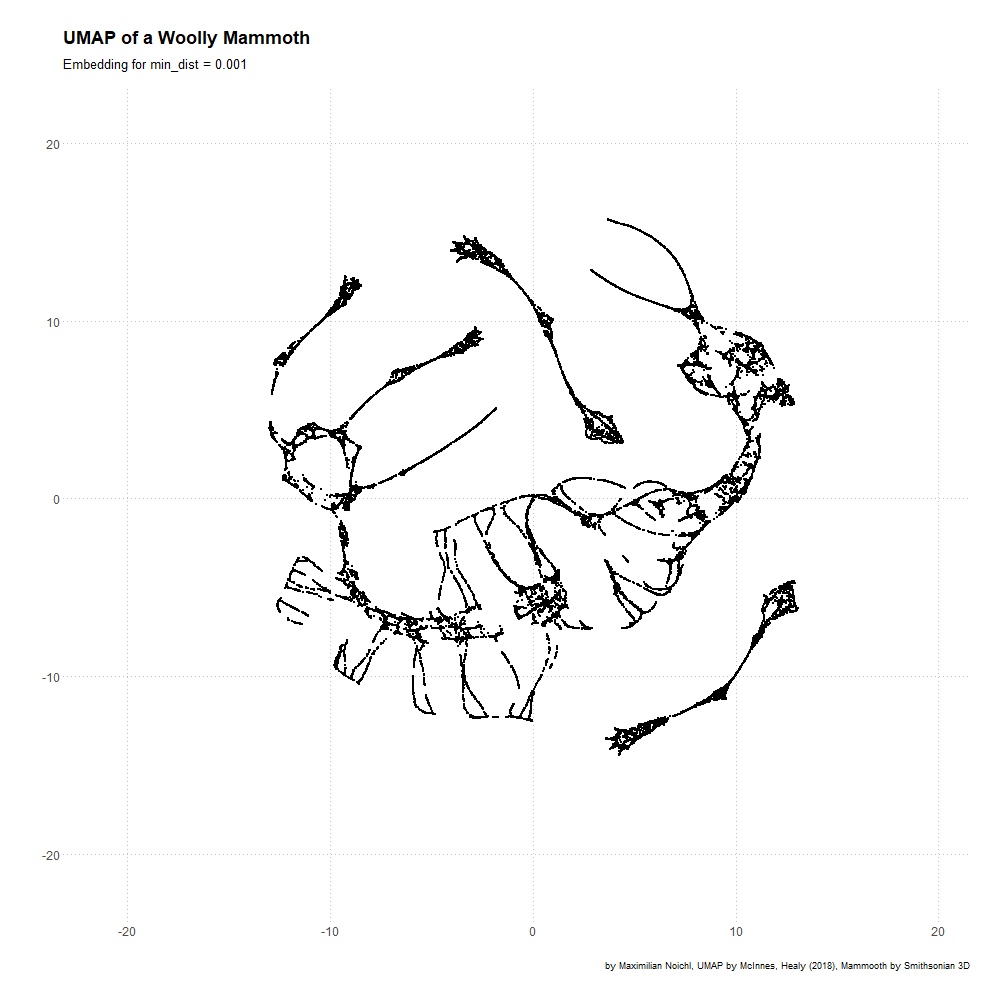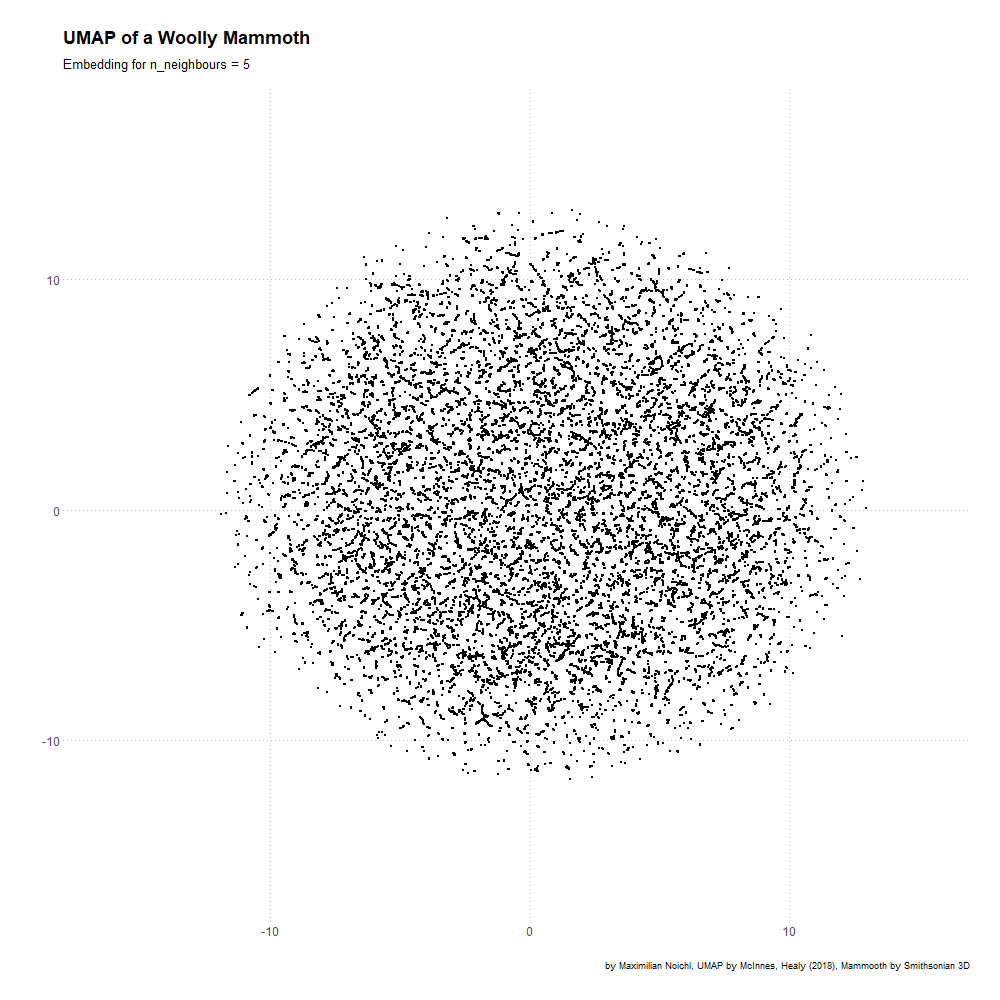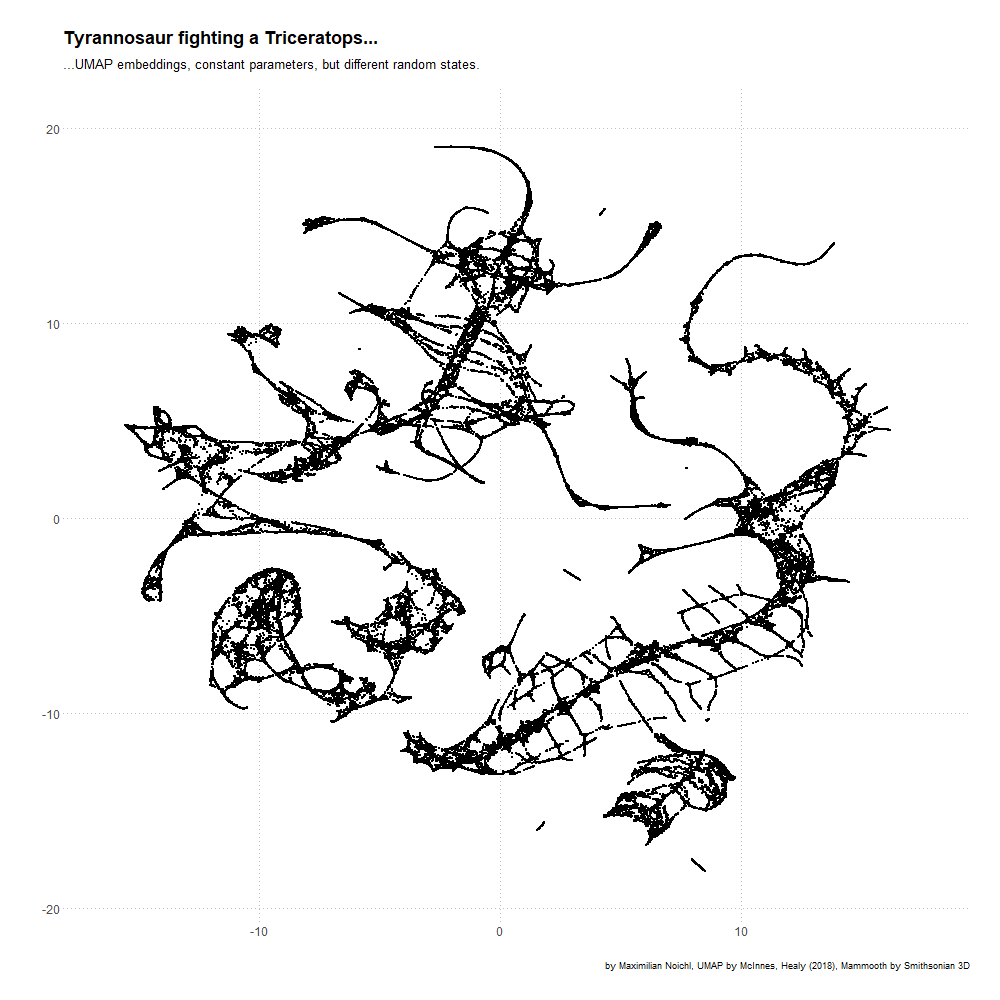Flattening Mammoths
Contents
Examples for UMAP reduction using 3D models of prehistoric animals
The models are taken from the Smithsonians 3D-scanning efforts. I put the datapoints for a Wolly Mammoth and a Tyrannosaur eating a Triceratops in the two .csv-files on Github.
The Jupyter-Notebook contains code to produce UMAP-embeddings, which are continously shifting with changes in the hyperparameters, as can be seen below. I tend to think that such animations should, wherever possible, be produced when UMAP-plots are published, so that the viewers can judge for themselves which properties remain constant under different parameters, and which are mere artefacts of a specific hyperparameter-setting or random-state.
Here is an image of the original Mammoth:

And here are 2D-embeddings of it with shifting hyperparameters:


And this is the T-Rex, and a series of embeddings with different random-states


Author Maximilian Noichl
LastMod 2020-09-10